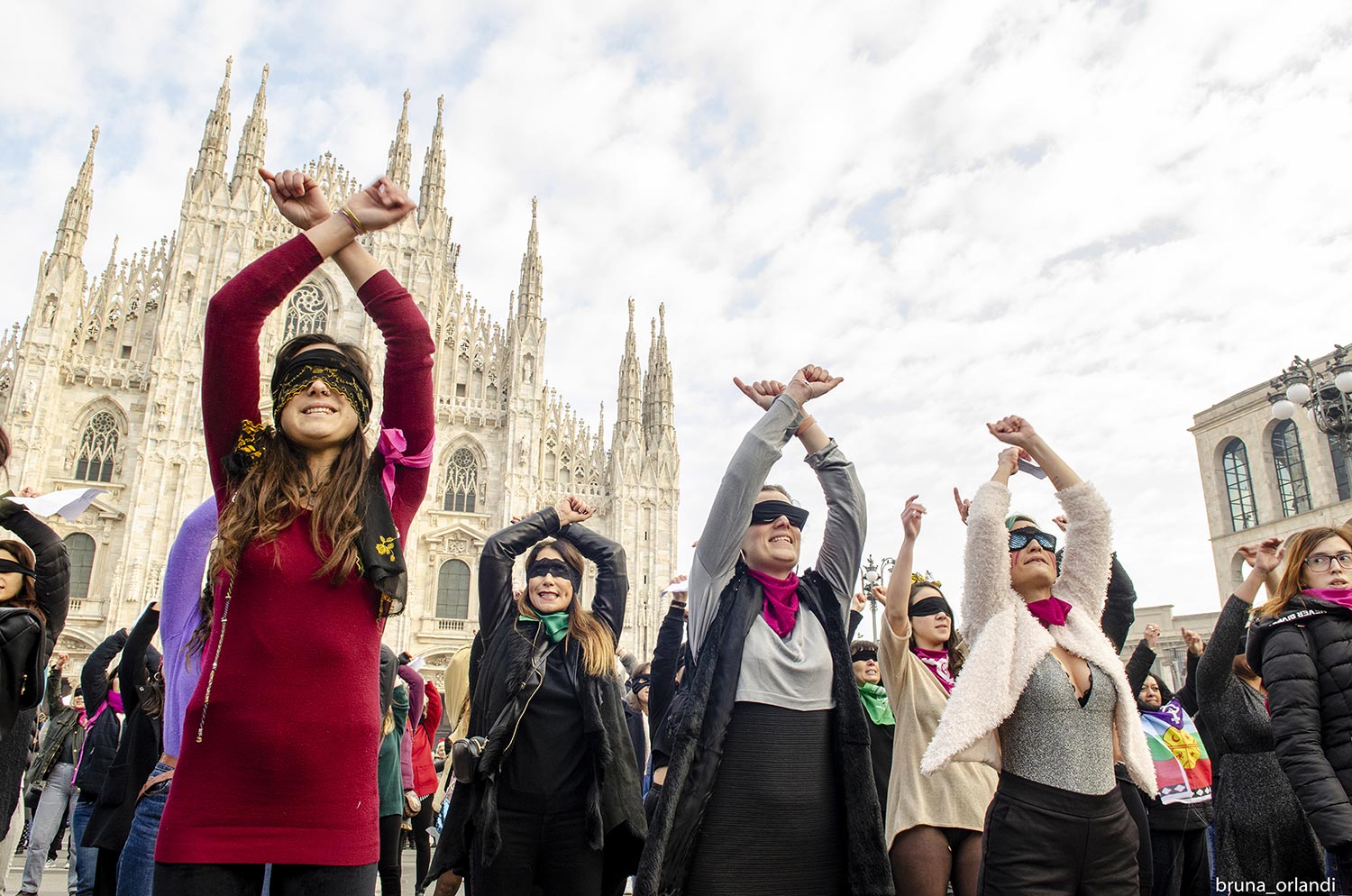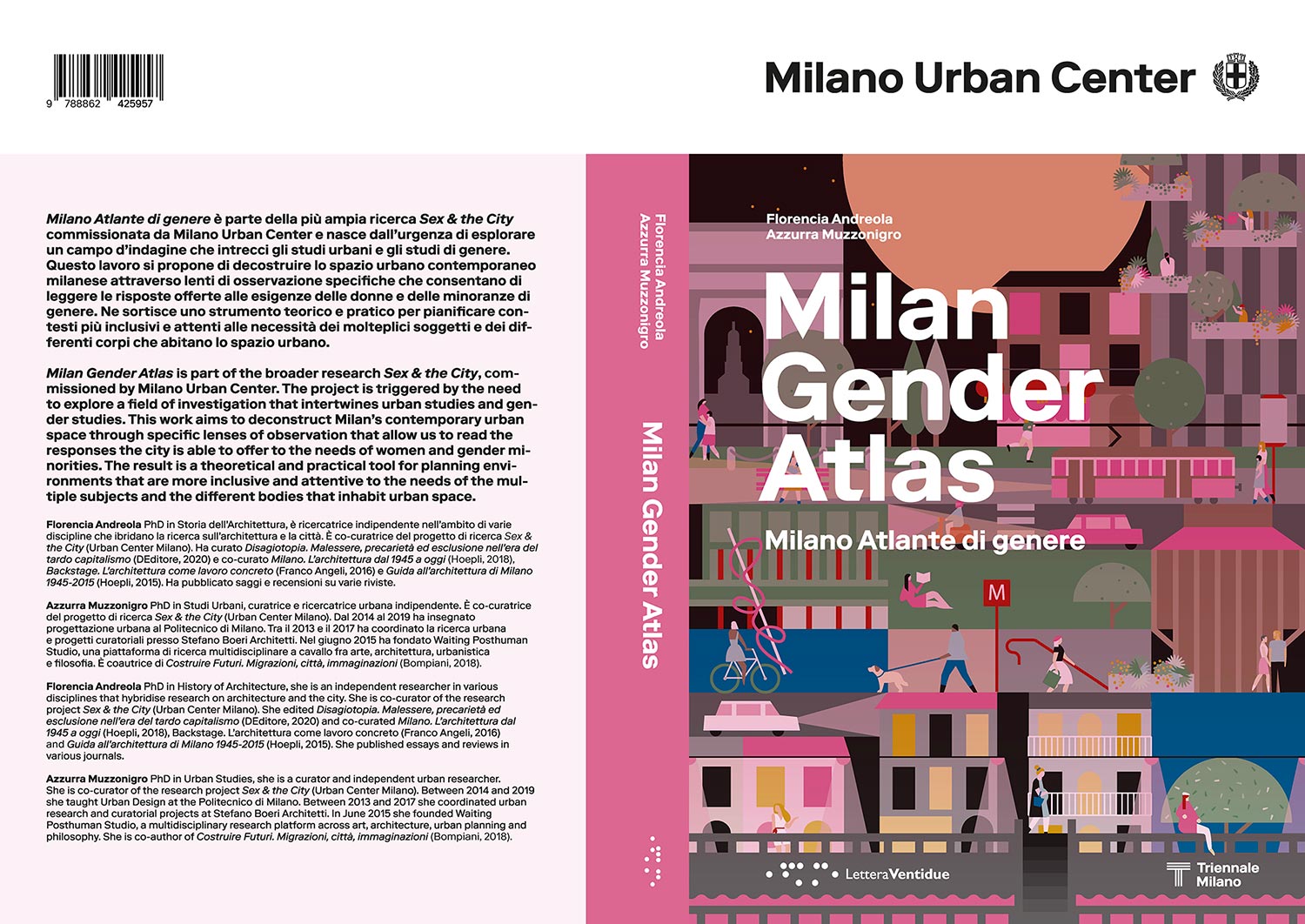- Login
Critical Spatial Practice




“Our cities are patriarchy written in stone, brick, glass and concrete.”
Jane Darke (1996)
In several countries women have now taken on a crucial role within national economies, however, the discourse on how the shape of the city and the urban landscape take into account the female universe is hardly ever fully dealt with. In public space, female bodies are still relegated to the imagery of domesticity or anchored to male sexual desire. On a symbolic level the city continues to be the space of men and, implicitly, the house or home the space of women. There is still a lot of work to be done across the board to transform this state of affairs: although there are undoubtedly some steps that have been taken in the desirable direction of equality, unfortunately, it will not be buildings designed by female architects alone that will make a difference to how women experience public spaces.
The Milan Gender Atlas, and more broadly the project Sex & the City, aims to shed light on a theme that is not often the topic of academic research in Italy, nor the focus of public policies, which are mostly limited to specific interventions rather than a broad-spectrum direction. If today ‘gender issues’ are at the center of public debates it is as a response to the great historical omission that has relegated women to lives inside domestic walls, so excluding them from public life. Nowadays it is impossible to keep conceiving of such a sexist state of affairs, and we must create a vision of the city (and of the world) that is able to include everyone.
Florencia Andreola, PhD in History of Architecture, is an independent researcher in various disciplines that hybridise research on architecture and the city. With Azzurra Muzzonigro, she is co-curator of the research project Sex & the City and co-author of Milan Gender Atlas / Milano Atlante di genere (LetteraVentidue, 2021).
Azzurra Muzzonigro, PhD in Urban Studies, is an architect, curator and independent urban researcher. With Florencia Andreola, she is co-curator of the research project Sex & the City on gender urbanism and co-author of Milan Gender Atlas / Milano Atlante di genere (LetteraVentidue, 2021).
Sex & the City is a social promotion association (APS), founded in 2022 by Florencia Andreola and Azzurra Muzzonigro, which observes cities from a gendered point of view, and does so through specific, theoretical and practical projects, public meetings and research projects. In this way, it tries to build a framework capable of integrating dimensions of gender into reflections on the city, so as to provide public administration with a useful tool to formulate policies that can organize spaces aiming at the well-being of everyone – female and male citizens.
The Milan Gender Atlas is conceived not so much as a complete and definitive mapping of spaces and subjects from a gendered perspective, but as an open and in-progress critical organism, ready to embrace the multiplicity of visions that are embodied in the space. Its main goal is to display a gender-related geography, while offering itself as a platform for dialogue and the collective construction of an imaginary still to be realised. With a female gaze that aims to disclose the power relations behind the way space is conceived, consistently the main aim of this research is not so much to provide answers, but to provide the tools to ask the right questions.
Matrix, Making Space: Women and the Man-Made Environment (Verso Books, [1984] 2022).
C. Criado-Perez, Invisible Women: Exposing Data Bias in a World Designed for Men, (Chatto and Windus, 2020).
L. Kern, Feminist City, (Verso Books, 2020).



































































